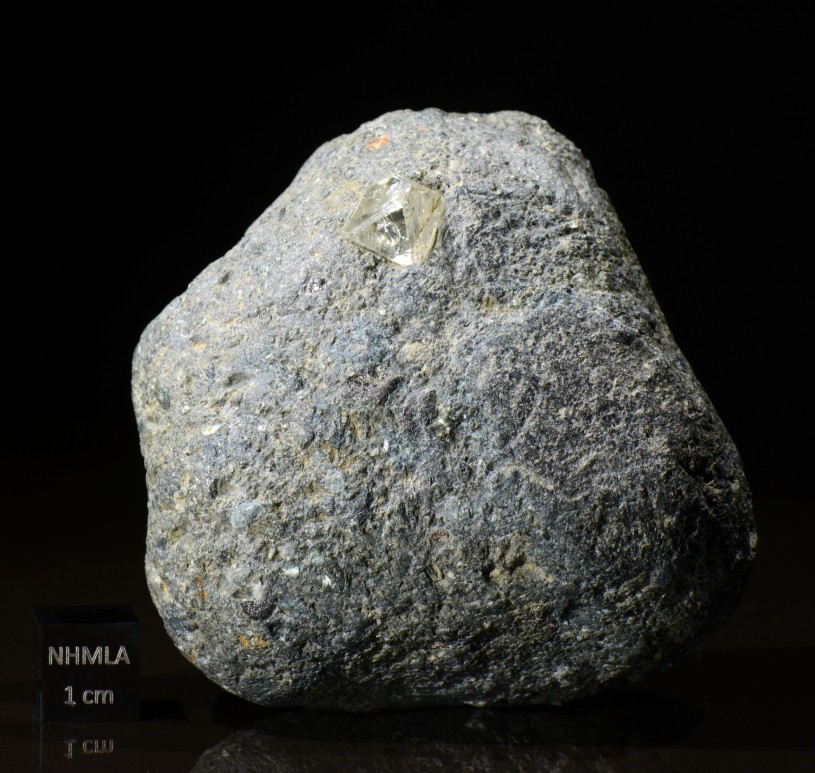Out of an abundance of caution for the safety of our visitors and staff, the museum will be closing at 3 pm on December 24 due to the impending storms. The museum will be closed Thursday, December 25 for the Christmas holiday. We will reopen Friday, December 26.
Fascinating Facets: The Pink Starburst Diamond
The dazzling science behind this precious gem

Stunning, jaw-dropping, and dazzling, the Pink Starburst is also officially fancy. Fancy diamonds, diamonds that are any other color than clear or white, get their distinct hues from a deformation on the atomic level. After its formation, pressures and heat push the carbon atoms over each other, and the resulting carbon pile-up produces an array of pink and red hues. Diamonds in red and shades like the Pink Starburst are some of the most sought-after colors. While it takes incredible skill to bring out such a delicious luster, it takes moving the Earth to get that pretty pink.

The incredible diamonds and other gems on display at Brilliance: The Art and Science of Rare Gems definitely dazzle, but there is also deep Earth history behind those brilliant facets. Possibly the first mineral to have ever formed, diamond is thought to be extremely common throughout the universe, riding around on meteorites as nanodiamonds from before our solar system was a gleam in the Sun’s eye, likely plentiful on ice giants like Neptune and Uranus as well as in carbon-rich stars. On Earth, they’re mostly found in the mountainous remnants of an extinct type of volcanic eruption.

A diamond in the buff
The last kimberlite eruption, the kind of volcanic eruption that produces diamonds, was over 70 million years ago. These extinct eruptions started in the asthenosphere, with the mineral kimberlite traveling through 100 to 300 miles below the Earth’s surface, dragging magma and other minerals along the way, leaving a carrot-shaped hole in the earth. “So you can imagine that this is molten material rushing through the deep earth interior at an incredible velocity,” explains Dr. Aaron Celestian, curator of Mineral Sciences at NHM. “And when it comes to the surface of the Earth, this is not just going to ooze out. It's going to explode quite violently.”

Kimberlite brought other minerals along for the ride, the magma acting as an elevator taking diamonds through hundreds of miles through the crust. “And they have to do it about 15 minutes,” Dr. Celestian adds. Timing is key to producing what we recognize as a diamond. “As it comes up, it's becoming less stable because the temperatures are cooling off. The pressures are reducing and the diamond is no longer in equilibrium.”

From the perspective of producing the precious crystals, it’s a potentially treacherous journey. “A lot of diamonds will actually dissolve completely on their way up. We've had some diamonds that showed signs of dissolving as they were ascending, so instead of nice sharp corners and octahedrons, they're like they're rounded and they're are very smooth. Sometimes they don't even look like a diamond.”

Elizabeth Taylor said, “Big girls need big diamonds” and when it comes to diamonds, size really does matter. Big diamonds need big temperatures and pressures to form.“Usually the bigger the diamond, the deeper it comes from because it has a longer time to grow at these higher temperatures and pressures. So the bigger the diamond, the deeper that you're probing down in the Earth,” says Dr. Celestian. With their origins deep in Earth’s past and beneath its surface, diamonds are a mineral scientist’s best friend.

Their tightly compressed, rigid structure lets diamonds carry minerals that would immediately dissolve if exposed to conditions above ground. These mineral inclusions like the recently discovered davemaoite would be completely inaccessible without diamonds. Similarly, gases and liquids trapped inside diamonds would immediately dissipate without their pressurized diamond containment.
Looking through the lens of diamonds lets scientists like Dr. Celestian glimpse of Earth’s processes that might otherwise remain hidden. “Plate tectonics drives everything,” says Celestian, “and all of plate tectonics is driven by heat flow.” Mineral inclusions like davemaoite illustrate the incredible movement of heat undergirding the plate tectonics that makes life possible on Earth. “The fact that it's trapped in a diamond is showing that davemaoite is actually moving around and circulating the deep earth interior with these diamonds,” Celestian adds. “If there is no heat emitting from the Earth, there's no volcanism. There's no water being ejected into the atmosphere. There's no gas that's being ejected into the atmosphere. Without that heat, we end up like Mars where there's just no plate tectonics.”
Diamonds aren’t forever.
The bad news: the diamond on your engagement ring and in Dr. Celestian’s lab are degrading as you’re reading this. Without the vast pressure and heat that helped form them, diamonds transform to their more stable iteration: graphite. The good news: it takes over a billion years to convert one cubic centimeter of diamond to graphite. So there’s plenty of time to bask in the dazzling allure of diamonds, but only a limited amount of time to catch the amazing diamonds, gems, and jewelry on display in Brilliance: The Art and Science of Rare Jewels.


